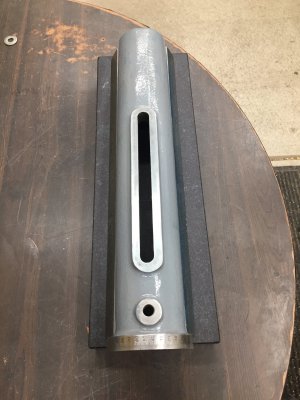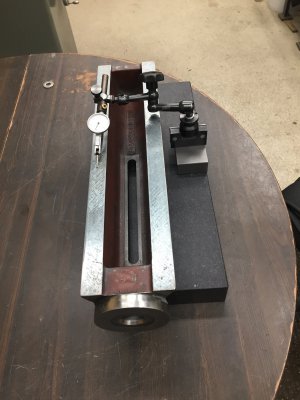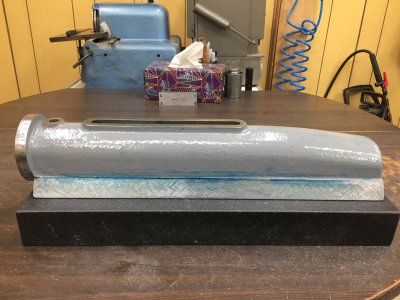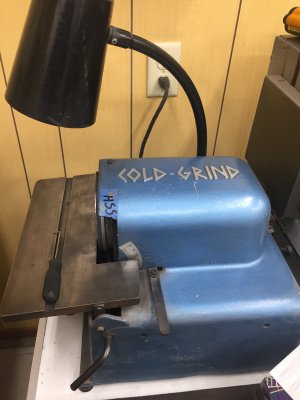Pete, DO IT!! Be open to an opportunity when it presents itself. And be humble, Richard is indeed an old crab, but he knows more about machine rebuilding than you or I.
Ok, now my question.
We usually use leveling to set up a machine and bolt it down in place. I get the three points thing, relaxing the cast iron and taking out the twist. Where I get confused is that at some point you are going to bolt that machine down to a bench or table or stand or the floor, at which time it probably won't be on 3 points anymore. So if you scrape it in when it is resting on 3 points, isn't that geometry messed up when you set it in place? Or are you creating new datum points for leveling in the same plane as the 3 points?
Ok, now my question.
We usually use leveling to set up a machine and bolt it down in place. I get the three points thing, relaxing the cast iron and taking out the twist. Where I get confused is that at some point you are going to bolt that machine down to a bench or table or stand or the floor, at which time it probably won't be on 3 points anymore. So if you scrape it in when it is resting on 3 points, isn't that geometry messed up when you set it in place? Or are you creating new datum points for leveling in the same plane as the 3 points?





